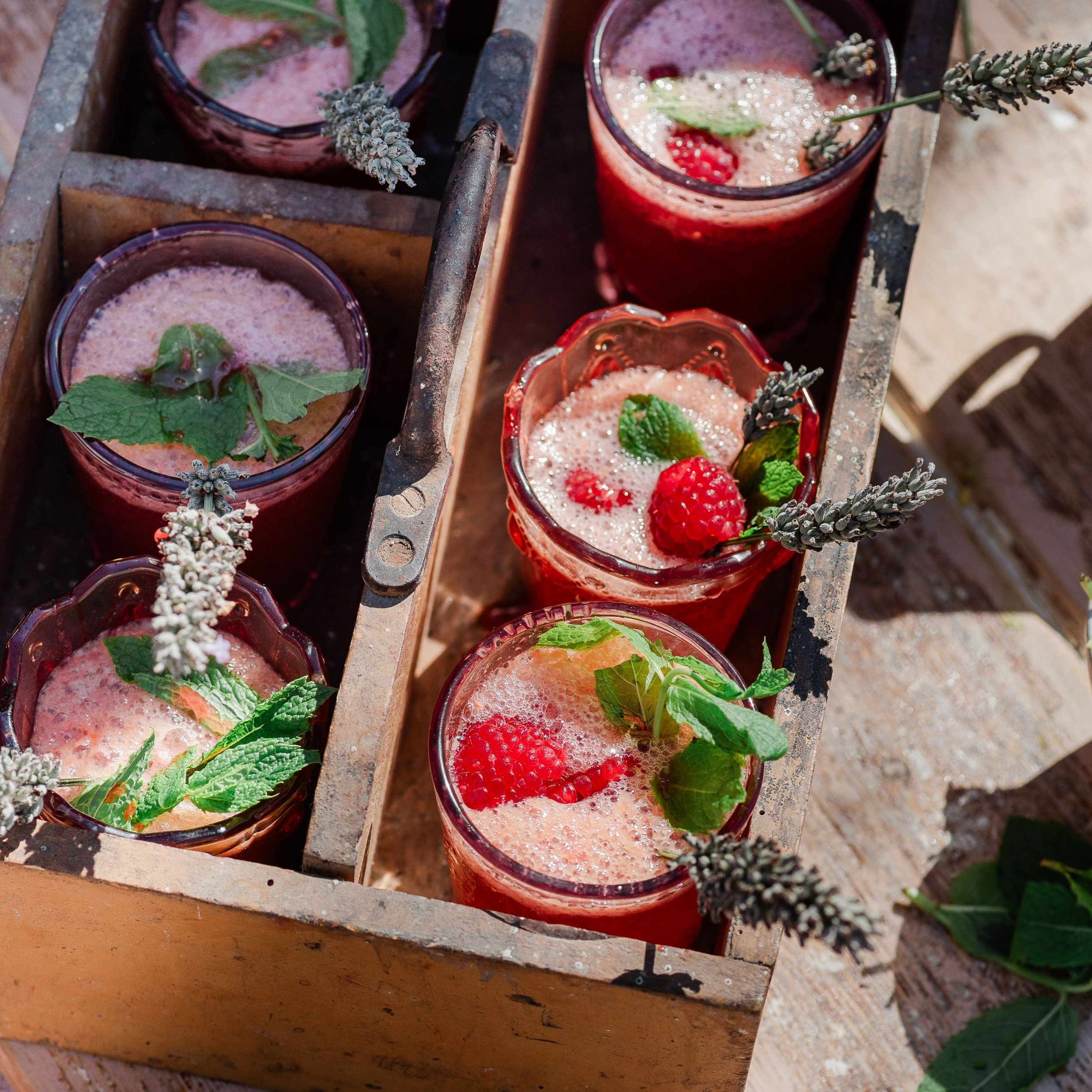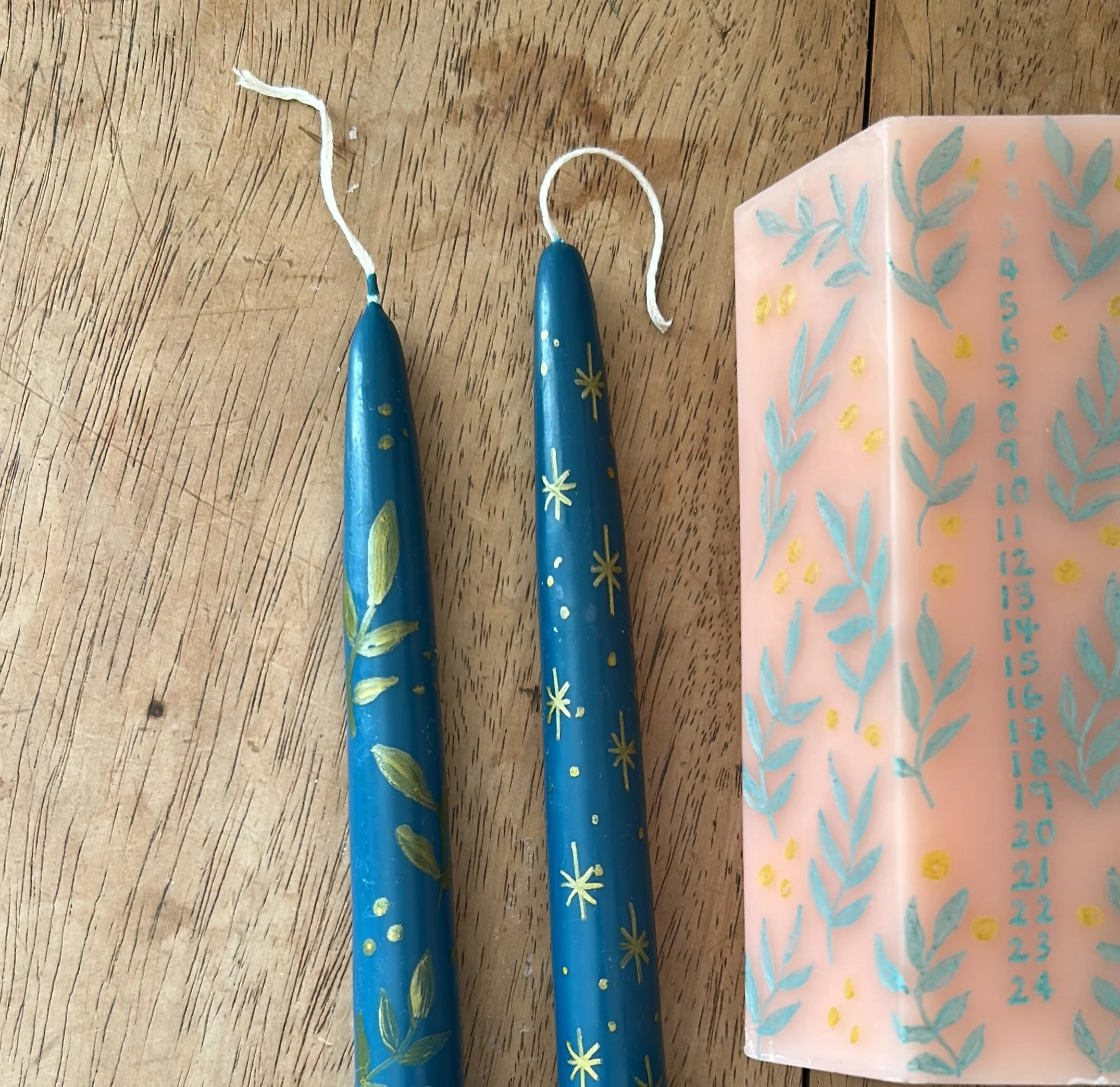Celebrating the solstice tonight? You can whip this cocktail up quickly or take your thyme and make the syrup, too. Happy Litha!
Serves 1
30ml thyme syrup* (that you prepared earlier) or simple syrup
(if you didn’t)
2 sprigs lemon thyme (if you haven’t made the thyme syrup)
2 large or 3 medium strawberries, washed and sliced
60ml white rum, vodka, or gin
22ml freshly-squeezed lemon juice
soda water
ice cubes
Garnish
lemon thyme sprig, sliced
strawberry
lemon wheel
straw
Tools
muddler
cocktail shaker with strainer
collins glass
1 Fill the glass with ice. If you haven’t made thyme syrup (below), smack 2 fresh sprigs of thyme between your palms to release the essential oils. Drop into the cocktail shaker with a dash of simple syrup.
2 If you have made thyme syrup, skip the step above and instead muddle the strawberry slices thoroughly with a dash of the thyme syrup in the shaker, to release all the strawberry juice. If you like, you can let them sit for about 30 mins to macerate slightly.
3 If you’re using fresh thyme, add strawberries now and muddle as above. For both methods, pour the rest of the thyme or simple syrup and your remaining ingredients (except the soda water) into the shaker.
4 Fill it two-thirds of the way up with ice, cover and shake hard for 20 seconds. Strain the mixture into the glass of ice. Don’t worry about tiny bits of thyme; they look attractive.
5 Garnish with a fresh sprigs of lemon thyme, strawberry slices, and a lemon wheel. Add the soda water and a straw.
*Thyme Syrup (for the Strawberry Lemony Heaven cocktail)
Makes approximately 250ml
250ml water
200g caster sugar
4 sprigs thyme, each about the length of a finger
Equipment
Sealable, heatproof presentation bottle, sterilized
1 Stir the water and sugar together in a non-stick pan over a low heat and let simmer for 2 mins.
2 Smack the unwashed thyme between your palms to release the oils and drop them into the pan. Immediately remove the pan from the heat. Let the thyme infuse for 10 mins.
3 While still piping hot, strain the liquid into a wide-mouthed pitcher, then funnel into the sterilized presentation bottle and seal.
4 Store in the fridge for up to 2 weeks.
Buy this month's The Simple Things - buy, download or subscribe
More cocktail recipes…
More from our blog…
Cocktail recipes from Wild Cocktails from the Midnight Apothecary by Lottie Muir (CICO Books, £16.99). Over 100 recipes using home-grown and foraged fruits, herbs and edible flowers. www.thecocktailgardener.co.uk











































